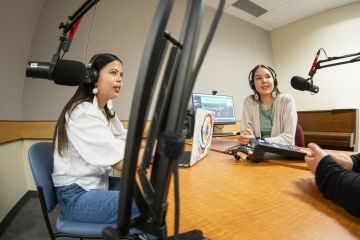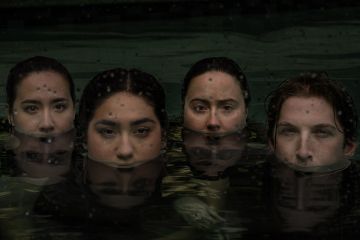Watershed moments in Indigenous law bode well for UVic law programs
- Margaret Suderman
The summer of 2014 was a remarkable period in Canadian legal history. Within the span of three weeks, two Supreme Court of Canada judgments involving aboriginal title and treaty rights were brought down. Together, they significantly altered fundamental elements of national governance and current plans for economic development, as well as the legal landscape relating to land and resource entitlements.
The decision in Tsilhqot’in v. British Columbia on June 26 marked the first ever award of aboriginal title in this country. The unanimous 8-0 decision declared that the Tsilhqot’in First Nation of central British Columbia held title to 1,750 square kilometres of land which the band had traditionally occupied. The ruling heightened the standard for consultation and required that the Crown and industry meaningfully engage with affected First Nations before proceeding with economic development.
The case was the subject of much political and legal commentary across the country. Many lauded the Supreme Court of Canada for its affirmation of the importance of reconciling common law with Aboriginal rights, laws and practices. Others raised concerns over the ruling’s potential impact on economic development.
Grassy Narrows First Nation v. Ontario followed only a few weeks later on July 11. This time, however, Canada’s top court upheld the Ontario government’s power to permit industrial logging on First Nation’s lands. The 7-0 decision was seen by some as a setback in a string of recent legal successes on the part of First Nations communities.
UVic is well-positioned to help dissect the meaning of these legal decisions and their far-reaching implications. Not only are we a global leader in Indigenous studies with some of the foremost experts in the field, our institution also happens to be situated on the territory of the Coast and Straits Salish people, in a province that is home to some of Canada’s most expansive unceded areas.
In response to Tsilhqot’in, UVic Law hosted a large panel discussion on aboriginal title and provincial regulation on September 25, 2014. Roughly 300 people attended in-person or over webcast from all across the country. The success of the event served as indication of UVic’s position as a trusted voice on the topic.
Among the esteemed panelists was Jay Nelson from Woodward & Company LLP. Nelson served as General Counsel to the Tsilhqot’in Nation, and co-counsel for the Xeni Gwet’in and Tsilhqot’in Nation in the appeals argued before the B.C. Court of Appeal and the Supreme Court of Canada. Krista Robertson, a lawyer at JFK Law Corporation with expertise in Aboriginal Rights Law, and Dr. John Borrows, who is currently serving as Canada Research Chair in Indigenous Law, rounded out the panel.
To the delight of students and his colleagues alike, Borrows returned to UVic Law in the summer of 2014 after several years spent working as Professor and Robina Chair in Law, Public Policy and Society at the University of Minnesota.
He says it is an exciting time to be conducting research and leading classroom discussions since new cases in the Supreme Court, such as Tsilhqot’in, have “changed the landscape of Aboriginal law.”
Borrows and Dr. Val Napoleon, Law Foundation Professor of Aboriginal Justice and Governance, are both leading experts in Indigenous law who have chosen UVic as their base to teach the next generation of lawyers and conduct ground-breaking research. They work in partnership to ensure students understand the significance of watershed judgments like Tsilhqot’in and Grassy Narrows.
Napoleon is also head of the school’s Indigenous Law Research Unit (ILRU), which seeks to honour the internal strengths and resiliencies of Indigenous societies. Through research and collaboration with Indigenous communities, the unit identifies legal principles that can be applied to issues of national importance, such as lands and water, the environment and resources, justice and safety and the strength of Indigenous economies.
Borrows and Napoleon also have a shared desire to establish the proposed JID program—a four-year dual Indigenous law degree program where students will receive an Indigenous law degree and a Canadian law degree.
“The thought so far is to have selected legal traditions as the focus for different courses—you could have Anishinaabe constitutional law, you could have Giksan property law,” says Napoleon. “So students would learn those specific laws from those different legal orders, alongside learning about Canadian constitutionalism and Canadian property law.”
Several months have passed since Tsilhqot’in and Grassy Narrows were first brought down and many of the long-term implications of the rulings remain undetermined. At this point, companies behind natural resource development projects have likely begun brainstorming on how to proceed with more meaningful consultation and more Aboriginal title claims are likely on their way to the courts.
In order to prepare for this ever-changing legal landscape, UVic Law strives to produce students who will enter the workforce as informed citizens with a strong cultural understanding and appreciation for Indigenous practices, customs and rights. The value of the law school’s long-standing focus on Indigenous initiatives and programming is more obvious than ever before. Judgments like these suggest Indigenous law is only going to become more salient in the future.
_____
Related: UVic Law 40th anniversary
In this story
Keywords: Indigenous, water, law, research, teaching
People: John Borrows




